Australia
Barrowsgate – James Hugh Smythe (“Jim”) – arrived back in Australia in January 1919 on the troop ship HMAT Marathon, which docked at Melbourne. He then returned to Adelaide, where his brother Frank and wife Mabel McArthur lived. Janet arrived on HMAT Osterley on 03 June 1919.
By 1920, Jim and Janet were living at 1 Clapton Road, Marryatville (which they named “Midmar”) and they remained in that house until the summer of 1924.
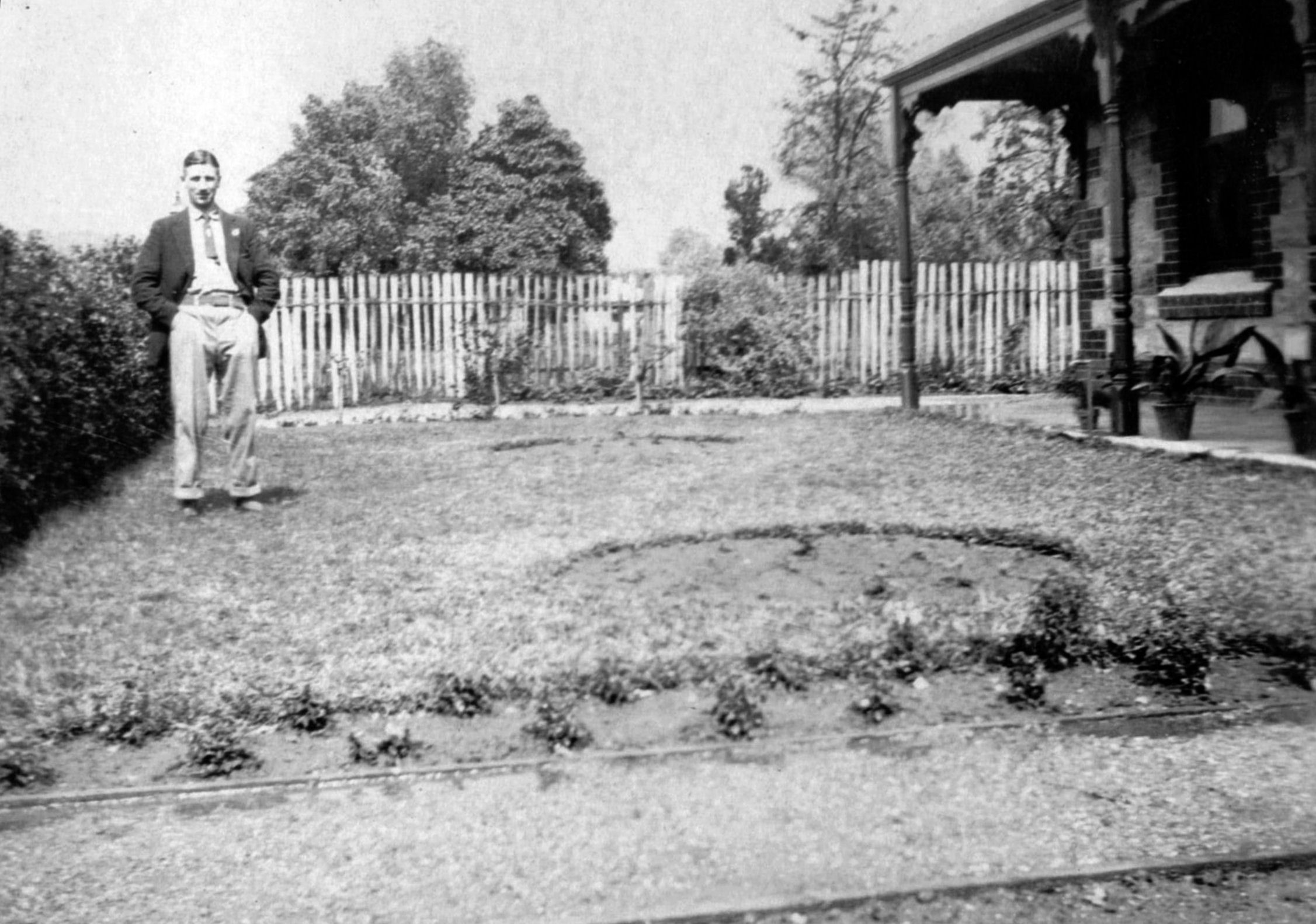
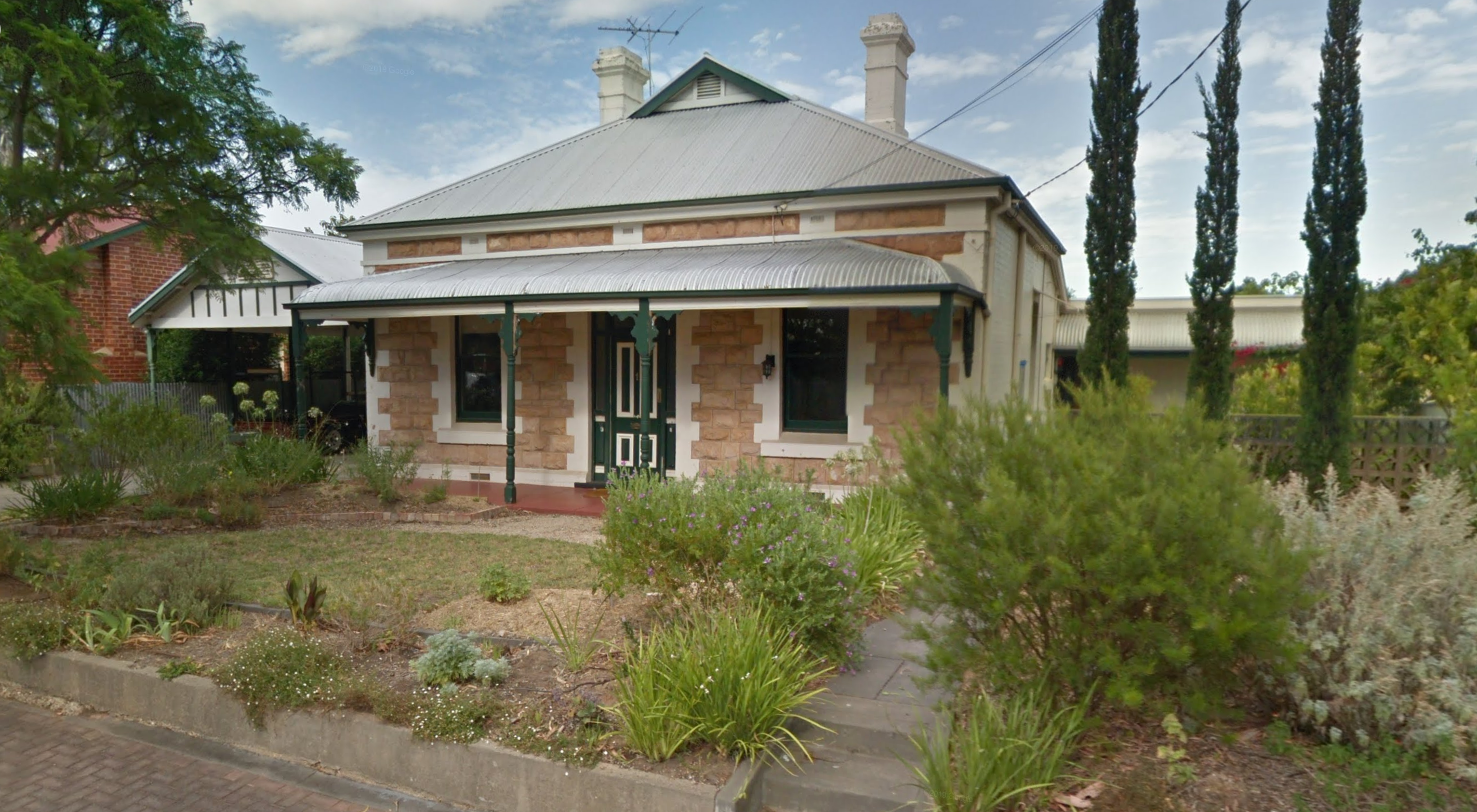
Their first son, George Edward Smythe, was born on 30 July 1920.
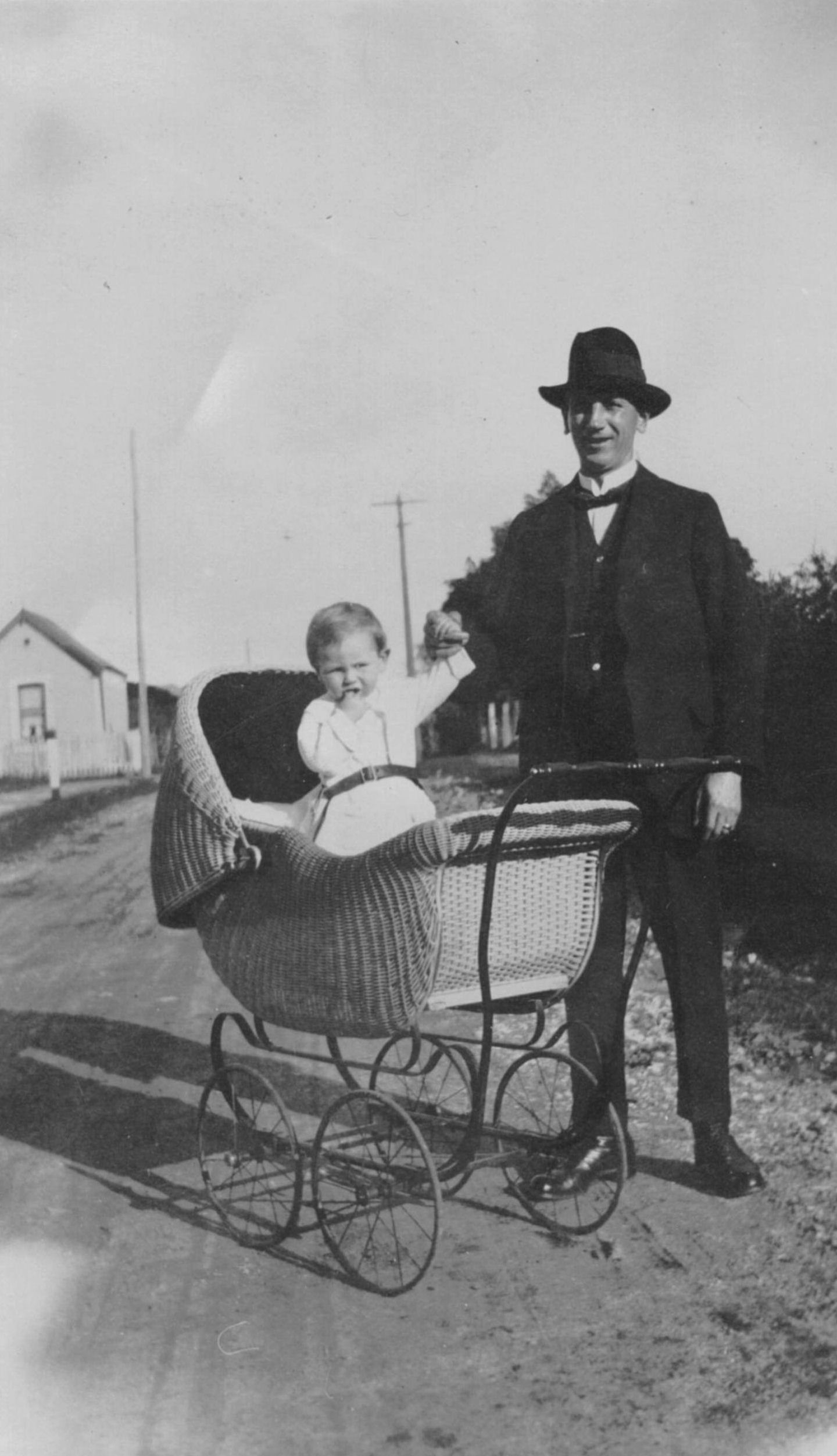
In a 1922 street directory for Adelaide, Jim’s occupation was given as “Lift attendant”. Jim and Janet’s second son, Murray McDonald Smythe was born on 18 March 1923.
Jim later worked in an Adelaide hardware store but, according to his son Murray, he found it hard adjusting to civilian life after the traumas of the war.
In 1924, Jim and Janet decided to return home to Scotland. Jim’s mother had died in July 1923 and his father was by now in his 70s. Although his father was well-off financially, he only had one sibling (Hugh) still living in Scotland and, of his four children, Amy was dead, Jean had moved to England and Frank and Jim were living in Australia. On 01 May 1924, they sailed for London via South Africa on the P & O ship Barrabool, a journey that took around six weeks. The cost of third-class tickets for the journey was around £84 in total for the family (Murray, as a baby, did not require a ticket). This is equivalent to over £4,000 in today’s money – a huge sum for someone working in a hardware store. We know from her Will that Jim’s mother’s estate amounted to over £500 at her death, so perhaps a legacy helped fund the journey home to Scotland.

Craigshannoch
The family’s first home in Scotland was Craigshannoch, a croft near Midmar Castle (and Janet’s childhood home at Mills of Hole), which they leased from 1925 onwards. It was situated halfway between Echt, where Jim’s father still ran the Balcarres Arms Hotel, and Tillybirloch, where Janet’s parents and several of her sisters lived.
Jim and Janet kept chickens and they also had a pair of goats for a short time, but they would have been living a subsistence lifestyle. According to Murray, their father bought a Shetland pony (Joey), which was to become very useful for transporting supplies from Echt, around three miles away.
Murray remembered the very severe winters at Craigshannoch.

Barrowsgate

In July 1928, Jim’s father died, leaving an estate of £1,500 (which would now (2024) be worth around £120,000). The bulk of the estate passed to his three remaining children (Frank, Jim and Jean). This would no doubt have helped finance a move for Jim and Janet to Barrowsgate – a larger, a ten-acre croft, with a four roomed croft house. Barrowsgate is around 10 miles south-east of Craigshannoch and situated about a mile north of Drumoak. This larger croft enabled Jim and Janet to turn to arable farming and sell their own produce as well as keeping cows for milk (some of which they sold).
By all accounts, their early years at Barrowsgate were generally a happy period for the children. Murray remembers Uncle Eddie coming to stay in the summer and picnics being held, to which all were invited.
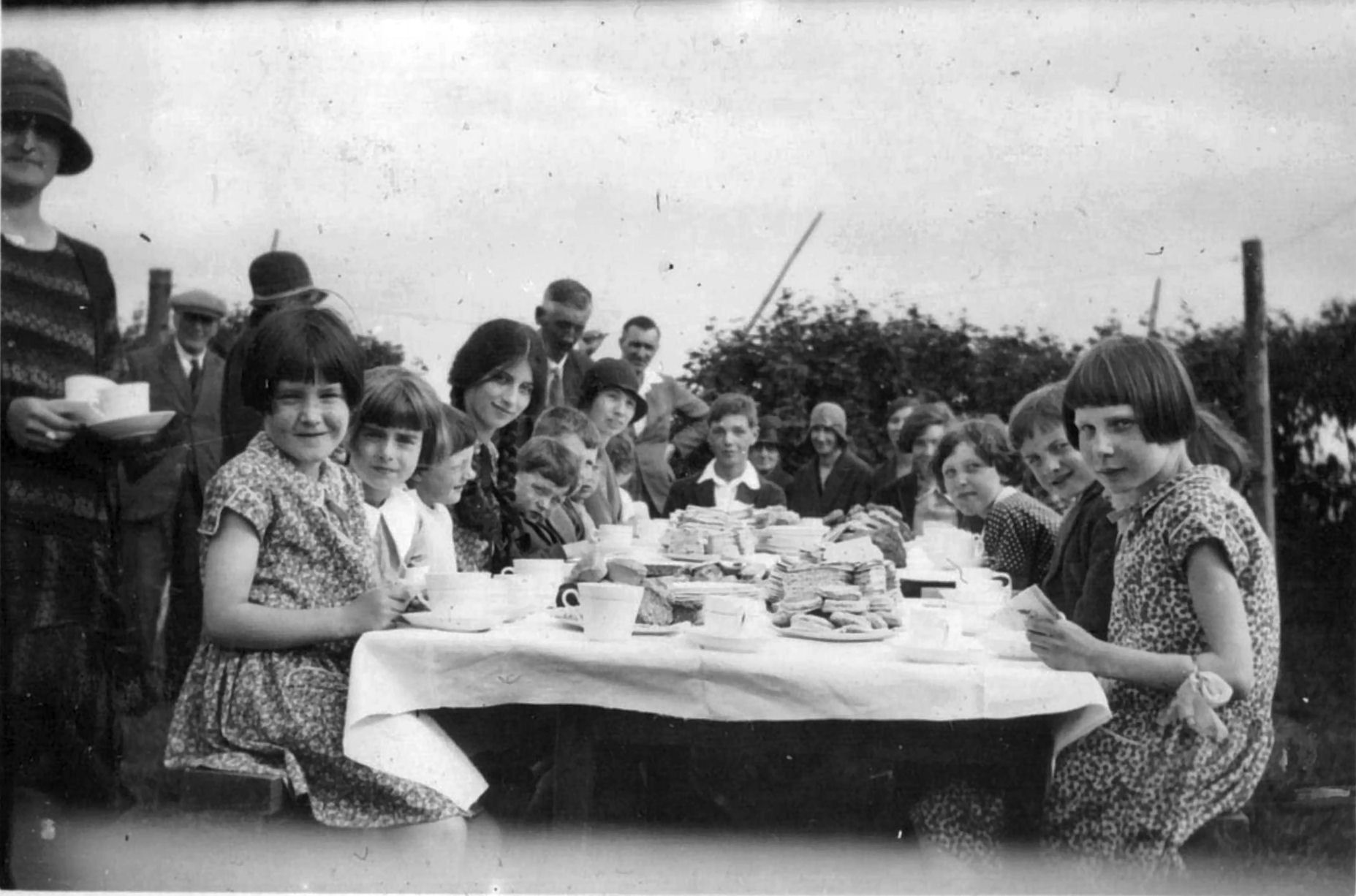
George was sent to Fraserburgh in 1932/3 to stay with his Uncle Eddie so that he could attend Fraserburgh Academy. Eddie had suggested that a move to the coast would help George’s asthma, which had worsened at Barrowsgate, possibly exacerbated by tree pollen.
Around that time, Jim’s health took a turn for the worse. According to Janet, this followed a visit to the cinema, where Jim had seen the American film “All Quiet on the Western Front”. The film contained graphic scenes of trench warfare which apparently must have triggered “shell shock” in Jim. He also came down with bronchitis, took to his bed and did not recover for 15 months. With George away, young Murray and his mother had to get the crops in themselves, which involved hand scything two acres of hay and four acres of corn.
No doubt inspired by his younger sister Jean (dedicatee of Sunset Song), Jim started writing professionally while at Barrowsgate. As was the tradition, he used the name of his croft as his nom de plume.
In February 1935, Jim was amongst the mourners at a memorial service at Arbuthnott for Leslie Mitchell (a.k.a. “Lewis Grassic Gibbon”). Jim had first met Leslie at Echt in August 1928 where Leslie’s former teacher, Alexander Gray, had recently taken up the post of Headteacher at Echt School.
Sunset Song was completed in August 1932 and published that September, by which time, Leslie had met Jim several times. Leslie is unlikely to have known any other Aberdeenshire crofters who had travelled as extensively as Jim and served in the trenches of France and Flanders. There is little doubt that Leslie drew on Jim’s experiences in writing Sunset Song, not just in creating the character Chae Strachan, but in depicting the lives of the crofting community.
In the book, Chae, who has travelled widely, is the tenant at Peesie’s Knapp, a good friend and neighbour of the Guthries and he is known for his socialist principles. This leads him to believe the world will be a place of peace and prosperity when the Germans have been defeated. This turned to disillusionment after experiencing the horrors of the trenches himself. Chae is well-liked, and a good worker, described as “one of the handiest billies in Kinraddie”.
Jim’s health eventually recovered and, early in 1935 they decided to relocate nearer the coast so that Murray could join George at Fraserburgh Academy.
Lonmay
A croft was found at the old Smithy at Park, near Lonmay, around 8 miles from Fraserburgh and the coast and they moved there around May 1935. Because Jim was, by now, writing under the “Barrowsgate” name, after moving to Lonmay, he simply changed his address to “Barrowsgate, Park”.
Jim’s son Murray recalled later “Because the sea air helped George’s asthma, and just by helping his asthma it helped his general health, it was decided that we would leave Barrowsgate and we would look for a place nearer Fraserburgh and as near the sea as possible, at least where we could get the sea air. Anyway, so we finished up in Lonmay … about eight and a half miles from Fraserburgh and no trees around about us at all, a fairly bare exposed croft”.
As Murray got older, he was able to help more on the croft, and started breeding pigs for market. He also did some work at the weekends on a neighbouring farm and, in return, the farmer would lend his horses and larger farm implements to Jim and Murray for their croft.
At Lonmay, Jim was able to supplement the family income from his weekly column in the Aberdeen Bon Accord and Northern Pictorial newspaper and occasional fee-paying work from the BBC.
While at Lonmay, Jim became very involved in improving rights for farm workers and became President of the Blackhills Farmers’ Club. Following the Government’s new “Agricultural Wages Bill” in 1937, and following their attendance at a number of parish and district consultation meetings, Jim and Lord Saltoun (a prominent Peer and local landowner) proposed the establishment of the Aberdeenshire Farmers’ and Farmworkers’ Association. There was broad support for this new Association which aimed to protect the interests of farmers and farm workers in all matters with respect to the Agricultural Wages Bill and otherwise. In June 1937, Jim was elected Treasurer of the new Association.
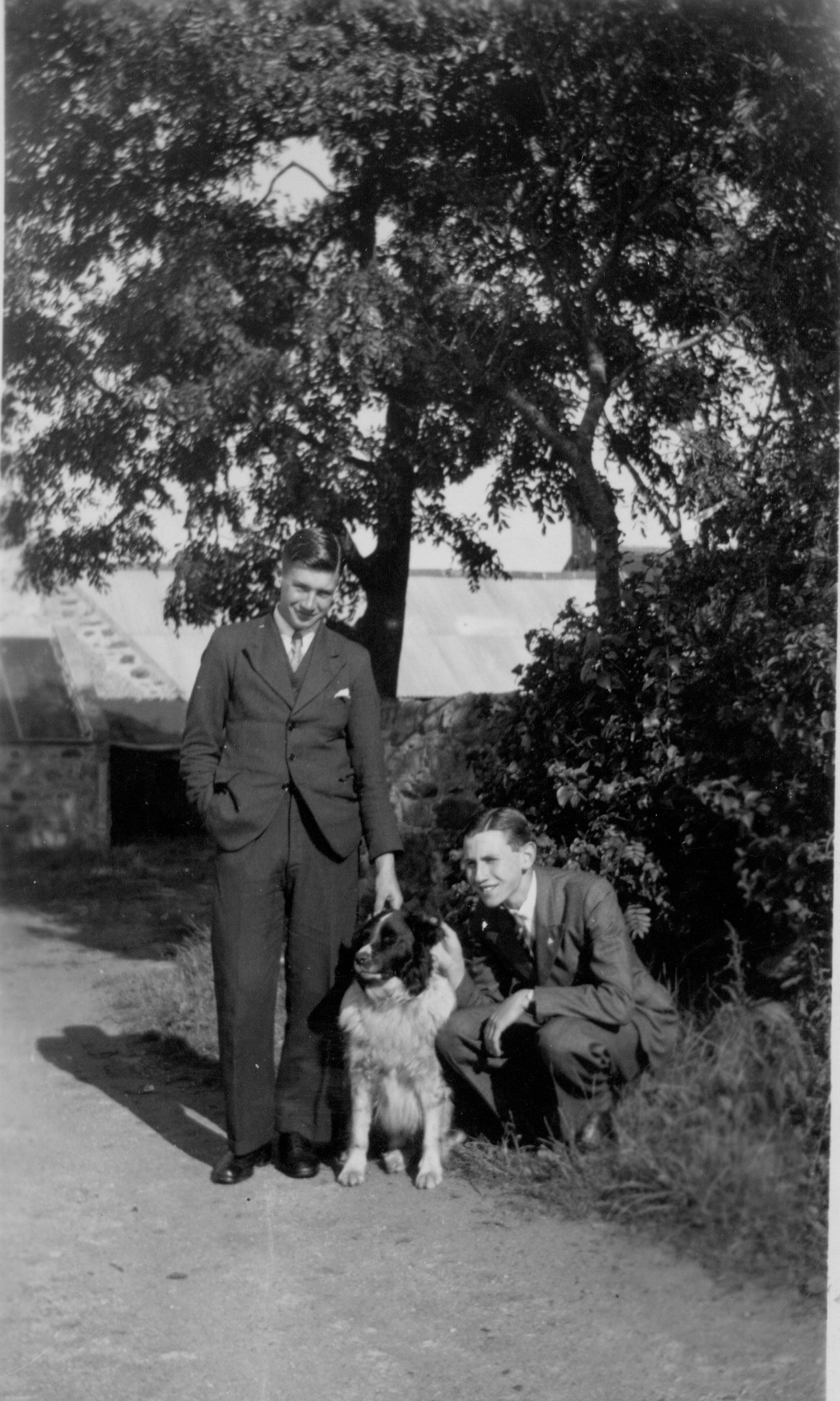
By late 1939, the Second World War had broken out. George had left Fraserburgh Academy and was in his final term at Leith Nautical College and Murray was in his final year at Fraserburgh Academy.
Hill O’ Den
In 1940, after Murray finished at Fraserburgh Academy, the family moved again. By this time, Jim was in his late fifties.
Jim’s son Murray relates “So, Lord Saltoun had bought Inveramsey, … a small estate beside Pitcaple anyway. There were just four smallish farms on it and one of these farms were vacant for lease so, because my father had done some work for, some secretarial work for Lord Saltoun, he offered my father the first chance of taking this small farm which he did. I had to go because I had to work it because Dad couldna do it. And that was my initiation into being a farmer. There was a 50-acre farm and as I say, I had to work it myself which was fair enough. It wasna all that hard a job for one person. You never had to look for a job. There was always plenty to do”.
In Summer 1942, Murray got engaged to Edith, a nurse at a local mental hospital but she was tragically killed in a car accident soon after. With Murray no longer at Fraserburgh Academy and George in the Navy, there was no reason to remain near the coast. After around three years at Hill O’ Den, Jim was offered the tenancy of a farm in Rothiemay by Lord Saltoun who owned the Rothiemay estate at that time as well.
Burnfield
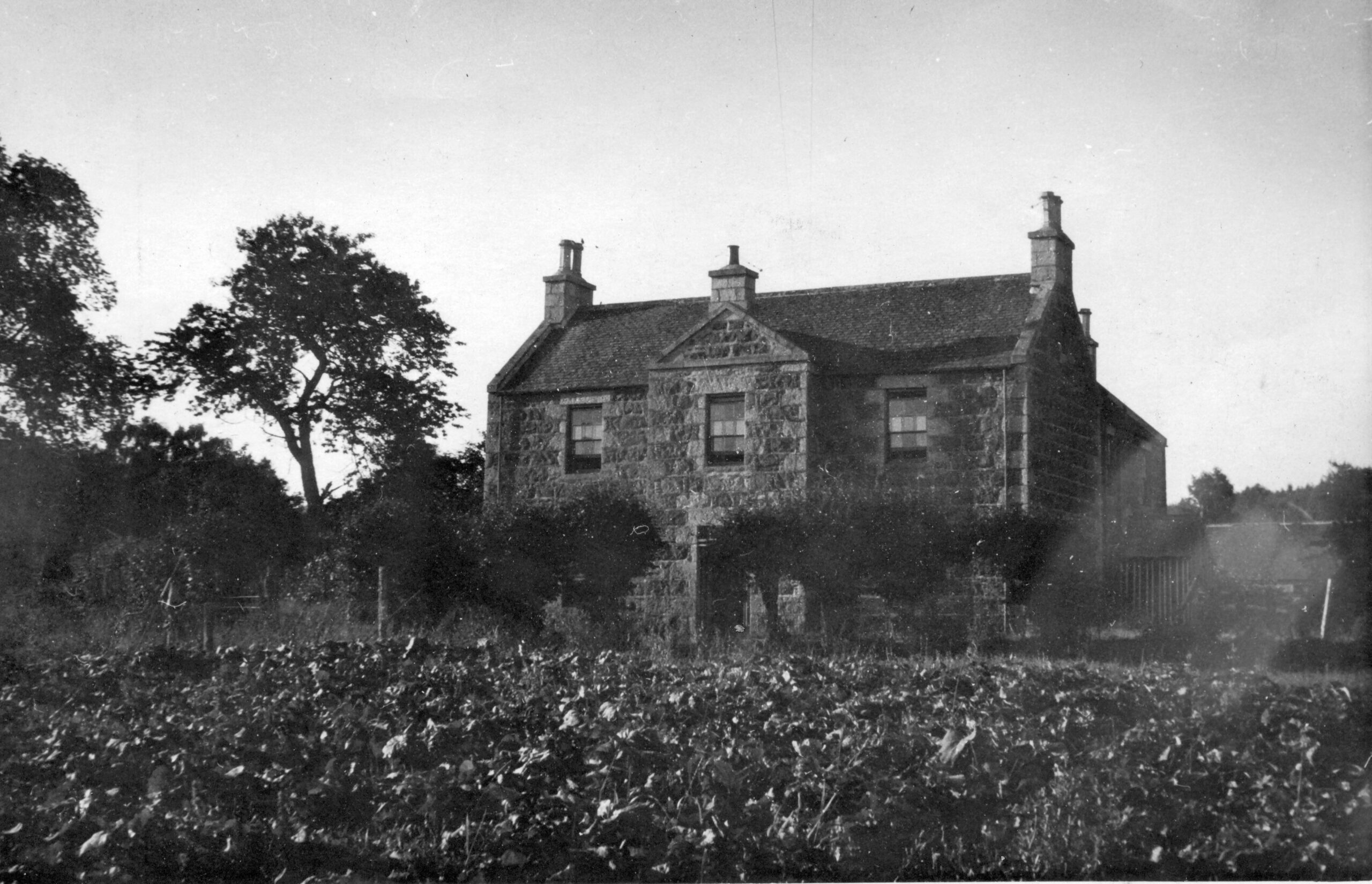
In 1943, Jim, Janet and Murray moved to a farm at Burnfield, Rothiemay. Having started out with a croft, a few chickens and a cow at Craigshannoch, they were now running a 120 acre farm and, with Jim now in his sixties with failing health, Murray needed help to run it. Initially, they took on one man, but he was soon joined by a couple of “land girls”. The land girls turned out to be of little use and, instead, Jim took on some prisoners of war from an internment camp at Ittingstone Farm on the Glass Road, near Huntly. Initially these were Italians and, later in the war, Germans. In contrast to their Italian POWs, the Germans turned out to be good workers and Murray kept one of them on for a while after the war ended in 1945, before he was repatriated to Germany.
Murray’s later reflections on moving to Burnfield were “It was a bigger farm and we thought that being a bigger farm it would mean bigger income. But we would have been far better I think if we’d stayed where we were because any extra money made just went on wages and it was a lot more hard work for no more income”.
George left the Merchant Navy at the end of 1945 and he and Margaret McEvoy were married at the Manse, Rothiemay Church on 28 February 1946, in a small ceremony with just family in attendance. After the wedding, George and Margaret lived at Burnfield for several months before moving into their first home in Glasgow in July 1946.
In October 1947, Jim had turned 65, which was the normal retirement age as he would then have been entitled to a state pension. Janet’s pension became due the following November. In June 1948, Jim was admitted to hospital with issues arising out of the war wound to his wrist. Although he was soon back in action, it was clear that his farming days were coming to an end.
In 1950, Murray married Jessie Knight from Huntly and she moved into Burnside. Murray had always assumed that he and Jessie would take over the farm once his parents retired. It turned out that Jim had other ideas. Matters came to a head during 1951 when it became clear that Jim and Janet intended to dispose of their leasehold on the farm and retire back to the Midmar area.
This led to an irretrievable breakdown in relations and Murray started applying for jobs. In December 1951, he sailed out to the Gambia, where he been appointed to the role of Horticultural Development Officer, with his wife due to join him a few months later. It was at this point that Jim discovered that Murray’s wife, who had taken on the job of bookkeeping for the farm, had also run up some sizeable debts. In addition, she had, in George’s words “wangled my parents out of all legal control of the farm by methods which, while morally fraudulent, would stand up in law”. George took some time off work to travel up to Rothiemay to sort things out. By the time Jessie had sailed out to join Murray in June 1952, everything had been resolved, debts paid and Jim and Janet were able to leave the farm.
Tillybirloch
On leaving Burnside in 1952, Jim and Janet headed back to Midmar and stayed with Janet’s older sister Carrie at Tillybirloch. Carrie had also retired from running her shop at Tillybirloch. Another Murray sister, Chrissy, lived next door in Tillybirloch with her farmer husband Donald Duff. For Jim and Janet, Tillybirloch was a staging post while they waited for a retirement home.
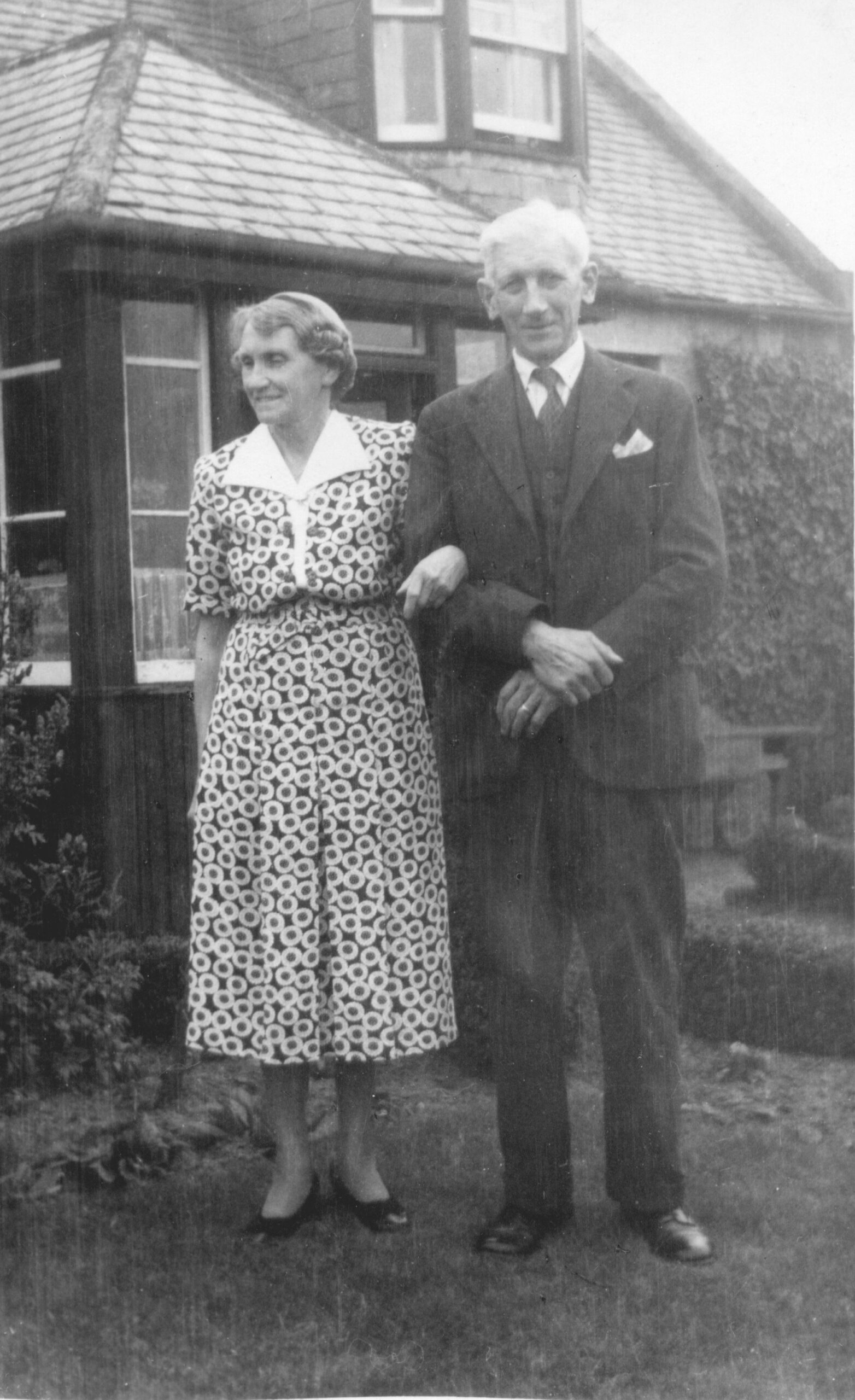
Woodside Crescent
Houses were in short supply after the war and it wasn’t until 1957 that they were finally offered a house in Torphins, around 6 miles from Tillybirloch. Jim and Janet moved into a pre-fabricated bungalow at 3 Woodside Crescent. They were 75 and 69, respectively and this was to be their last home together.

Janet’s younger sister Chrissy and her husband Donald Duff also retired to Torphins around the same time. On 18 April 1962, Jim died, aged 79 of bronchitis after a particularly severe winter. Jim was buried in the family grave at Echt.
Janet survived him, moving to a more modern bungalow at Kinnairdy Terrace, Torphins in 1969. In 1977, Janet died in Caithness General Hospital, where she had been moved to be nearer Murray (by then living in Dunbeath), on 01 May 1978 aged 89.
